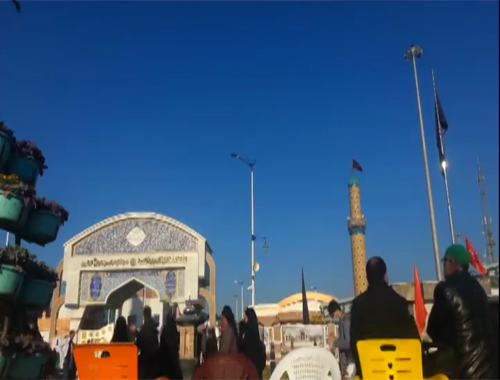The Author's Approach in `Abaqat
- Details
- Hits: 2485
`Abaqat al'anwar was written in Persian because Shah `Abd al`Aziz's Tuhfah, which it refuted, was also in Persian. As mentioned above, Shah `Abd al`Aziz had cited five verses of the Qur'an and twelve traditions of the Prophet (S) as constituting the basis of Shi`i argument conceming the Imamate of the Imams of the Ahl alBayt (A). This was itself a misrepresentation of the Shi`i case, for there are hundreds of verses and traditions, many of which are scattered throughout the Sunni hadith corpus as well as works in tafsir. Even the verses and traditions that he cites are dismissed summarily by him on, as Sayyid Hamid Husayn shows, flimsy and untenable pretexts.
The published parts of `Abaqat deal with eight of these traditions, each part dealing with the sanad and doctrinal import of one of them. Sayyid Hamid Husayn's approach in each of these parts is to show that the hadith is a mutawatir one, having been narrated by Sunni traditionists of every generation from the time of the Companions to the scholars of his own era. He devotes a section to each of the narrators, quotes the tradition as narrated by him, and cites the opinions of biographers and Sunni authorities of `ilm alrijal regarding his reliability, trustworthiness and his scholarly station.
After discussing the sanad aspect of the tradition, he goes on to deal with its meaning, dealing one by one with all the various arguments that have been advanced by Sunni scholars to refute what the Shi`ah assert to be its doctrinal implications. His treatment is so logical, meticulous, precise, thorough and exhaustive that one cannot but be struck with wonder at his prodigious, or rather miraculous, learning and his encompassing mastery over the entire Islamic heritage of thirteen centuries before him which lies in front of him like an open book.
This sketchy study of `Abaqat relates to its part concerning the Hadith alThaqalayn. At first we will give a list of its narrators belonging to every century of the Hijrah calendar. A brief reference is given under the name of each narrator concerning his standing with Sunni authorities on rijal. We have included the names of other narrators from the appendix (mulhaqat) to `Abaqat by Sayyid `Abd al`Aziz Tabataba'i, which has been included in the condensed Arabic translation by Sayyid `Ali Milani.
Reprints of most parts of `Abaqat al'anwar have appeared in Iran. The first section of the first part, dealing with the sanad aspect of Hadith alGhadir was published in 1369/1949 in 600 pages from Tehran. The twelfth part, dealing with Hadith alThaqalayn and Hadith alSafinah, was published in six parts and three volumes (vol. 1 in 1379, vol. 2 in 137879, and vol. 3 in 1381 and 1382) by Mu'assasehye Nashre Nafa'ise Makhtutat, Isfahan. Madrasat al'Imam alMahdi, Qumm, has published offset reprints of the first Indian lithographed print on the occasion of the author's first death centenary (vol. 3 on Hadith alWilayah, 1406; vol. 4 on Hadith alTayr, 1405; vol. 5 on Hadith Madinat al`ilm, 1406; vol. 6 on Hadith alTashbih, 1406; vol. 8 on Hadith alNur, 1406). `Allamah Shaykh Ghulam Rida Burujerdi has prepared a new edition of the book giving all the necessary references. His edition is under print.
Sayyid `Ali Milani has published ten volumes of Khulasat `Abaqat al'anwar, which is a condensed translation of the book in Arabic. The first two volumes of his translation, which begins with Hadith alThaqalayn, were published in 1398. Bunyade Bi'that, Tehran, has published a new edition of the Khulasah, of which ten parts, dealing with Hadith alThaqalayn, Hadith alSafinah, Hadith alNur and Hadith alGhadir, have appeared.











